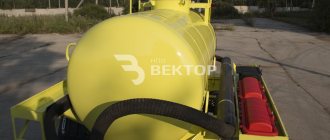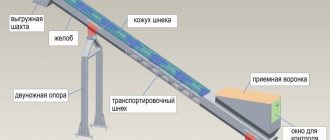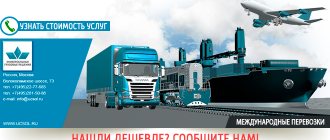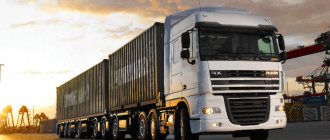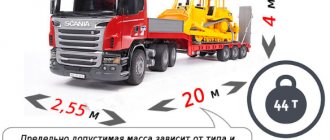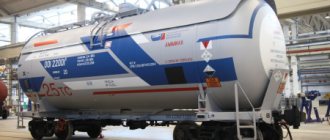Today, cargo transportation has become a necessary part in our lives. Their services are used by ordinary people and huge companies. What is the concept of cargo transportation? Freight transportation is an action during which various goods are moved from one point to another using a vehicle.
There are many ways to move cargo from sender to recipient
There are different types of cargo transportation, which have their pros and cons.
What types of cargo transportation exist?
The movement of goods from one point to another can be classified according to the type of transport, territorial indicator, and method of transportation.
All cargo is divided into international and interregional. In the first case, the sending and receiving points are in different countries. Often, a vehicle crosses not one, but several borders before delivering the contents to the designated location. This type of movement requires special permits and a considerable number of customs and other procedures.
Interregional transportation is simpler, as it is carried out in the region of one state. But they also require special permits and compliance with certain rules.
Transportation is also distinguished by the types of vehicles used:
- Car ones are very convenient and are used most often. Optimal in terms of financial costs for delivery.
- Rail, used in cases where the destination is located far from federal highways. Railway transport guarantees delivery in a short time to places inaccessible to vehicles.
- Waterways – allow the movement of large volumes of goods between states separated by waterways.
- Air is the most expensive and fastest way. Often used to deliver perishable goods.
Modern cargo transportation services allow you to transport both small packages and huge containers, and even oversized cargo. Often, a carrier carries out multimodal transportation, transporting goods by several types of vehicles.
Goals and objectives of transport logistics
For the carrier, the most important task is the correct organization of cargo delivery, which is called transport logistics. Logisticians develop optimal loading, delivery and unloading options. Logistics challenges face cargo carriers of any size, regardless of the territorial coverage of the provision of services.
A competent approach to logistics can reduce delivery time and reduce financial costs for its implementation. That is why large companies are constantly optimizing this area, developing more and more new approaches to cargo transportation.
The main goal of logistics centers is to deliver cargo with an optimal ratio of price, time and quality. Everything is important here: choosing the most suitable type of transport, laying out suitable routes, as well as in coordination with other structures, calculating the speed of movement of the vehicle, etc. Not all goods can be delivered in the cheapest way. For example, some types of perishable products are transported by air, although this is the most expensive mode of transport.
Logistics has the following goals:
- future delivery planning;
- organizing the entire process from loading to unloading;
- documenting;
- legal and information support;
- process optimization;
- cost minimization.
The developed plan is agreed upon with the customer, and changes are made to it if necessary.
Based on the goals and functions, logistics sets itself the following tasks:
- Analyze the properties of goods.
- Build routes.
- Select a suitable vehicle.
- Choose the right logistics partners.
- Monitor the cargo during transportation.
Each task is associated with a number of nuances and difficulties.
Transport logistics as part of logistics science
Let's imagine a person who has opened his own business and is engaged in the manufacture and sale of wooden souvenirs. At first, his own car will be enough for him to bring materials to the workshop and finished goods to the store. But over time, its production will begin to grow, and in addition to thinking about how to make money, you will need to think about finding new suppliers, opening a second workshop and branches in other cities.
How can he now manage to carry out all the necessary transportation himself while driving a single car? This is where logistics and transport companies come to the aid of businesses.
Logistics studies the management of all flow movements; its subsection, transport logistics, is responsible for the transportation of material goods through various vehicles.
Costs for transport operations take up about 50% of all logistics costs. The quality of transportation affects costs no less than their direct cost. In this regard, it is very important to consider transport logistics:
- From the point of view of the efficiency of the chosen mode of transport;
- From the perspective of organizing the transportation process;
- From the client’s point of view, storage and cargo handling conditions are no less important.
What types of transport are used in cargo transportation?
Depending on the type of goods transported and the distance of the route, different types of road transport are selected:
- flatbed trucks for construction materials and cargo that do not require special transportation conditions;
- vans with closed bodies for furniture, grocery and non-grocery goods;
- refrigerators for food and other goods that require special temperature conditions;
- tanks for fuels and lubricants or liquid media;
- dump trucks, if automatic unloading is required (crushed stone, sand, brick);
- platforms for oversized cargo and special equipment.
Rail transportation is carried out using liquid tanks for liquid media, bulk or bulk wagons (goods are transported without taking into account seats) wagons. Water transport with platforms for loading containers, loading into holds or the presence of bulk tanks. Air transportation allows you to transport goods with limited weight. The final weight depends on the type of air transport.
Classification of cargo transportation by type of transport used and categories
All transported goods are classified in accordance with generally accepted standards. Products are divided into:
- Dangerous, the transportation of which may harm the environment or human health/life. This category is transported under the strictest safety measures.
- Perishable, requiring special storage conditions: temperature, humidity. When delivering them, it is important to consider expiration dates.
- Oversized and extra heavy with non-standard dimensions and weight. Such goods often cannot be transported in a standard way; it is necessary to choose special routes and modes of transport.
- Live, for example, poultry, cattle, etc. When transporting them, it is important to ensure convenience, good air exchange, the ability to supply water, food, and much more.
- Heavy, requiring special means for loading and unloading.
Each type is delivered with unique requirements in mind.
Types of routes
To maximize transportation performance, choose the right type of route. There are three of them:
- Pendulum . The vehicle moves repeatedly between two points. Such a route, in turn, has an idle or loaded (fully or partially) return run. In order to avoid unnecessary costs, in the return direction they try to find goods that should be transported to the starting point and prevent empty runs. The pendulum mode is used for large special cargo flows.
- Ring . The route on the map looks like a ring, in which several points are combined, and the starting and ending points are the same. This type of movement is relevant if there is a need for the distribution or collection of goods at several unloading or loading points.
- Prefabricated or disassembled . The route is drawn up according to the location of the points where goods are to be picked up and then distributed.
The correct choice of the type of freight transportation, their rational combination, and the use of the desired route allows a motor transport enterprise to reduce costs and obtain the greatest profit from its activities.
Classification of transportation by type and nature of cargo
This classification is based on the properties and characteristics of the goods transported, according to which they distinguish:
- Dangerous - road transportation of goods hazardous to human health and the environment. Provides special conditions for processing documentation and training of responsible persons - drivers and managers. Such transportation is carried out in compliance with safety measures taking into account the risks;
- Live - transportation of livestock: domestic, circus, agricultural, zoo animals;
- Perishables - delivery of food, fresh flowers, and certain groups of medications. Transport equipped with refrigeration equipment can be used. This type of cargo transportation is subject to requirements for maintaining a given temperature regime and meeting delivery deadlines;
- General - forwarding of piece cargo for urgent purposes;
- Valuable - refers to road transportation of items of increased value.
Types of road transport by size and volume of cargo
Large sizes and heavy weight of cargo make it difficult to transport them. An important role is played by the quality of fastening, which guarantees the safety of the cargo. The peculiarity of such road transportation is that for its implementation it is necessary to resort to the installation of special structures. This affects the cost, which is why this type of road transport in Russia has high tariffs.
Taking into account the dimensions, the following types of road transport are distinguished:
- Standard - weight, dimensions, type of cargo do not exceed the operational and technical characteristics of vehicles;
- Oversized - the dimensions of the transported cargo exceed the parameters of the vehicle. These include industrial machines, construction, road, and agricultural machinery, equipment for oil refineries, frame structures, and large pipes.
Taking into account volume:
- Low-tonnage - transportation of homogeneous items in small batches;
- Large-tonnage - transportation of homogeneous items in large quantities;
- Prefabricated - transportation of dissimilar objects of large volumes and weight.
History of the industry
For the first time, the phrase “transport logistics” was officially heard in 1974 in Berlin at the European Congress. At the same time, its main tasks and spheres of influence were formulated.
Transport logistics can be defined as the organization of cargo delivery to a specified point, along an optimized route in the required time with minimal costs.
In the West, the logistics services market was formed back in the 1990s and every year, according to experts, its capacity grows by an average of 20%. In Russia, people started talking about transport logistics only with the transition to a market economy.
Main types of freight transport
Cargo transportation can be:
- aquatic;
- railway;
- air transportation;
- automobile.
Water delivery is the transportation of goods by water vehicles, such as steamships, tankers and bulk carriers. Thanks to sea vessels, it is possible to transport objects to distant countries and to other continents. There are river and sea cargo transportation. River ones are divided according to criteria.
- By type of communication: internal - within one navigation (navigation), direct - within more than two river navigation, direct water - when using river and sea navigation, mixed - when working together with other types of transport.
- By batch size: ship cargo - the same type of cargo, with an identical name, going to the same place, guaranteeing the full load of the taken vessel. Prefabricated – consignments that weigh more than 20 tons, which do not guarantee the filling of the entire vessel, and have different final delivery points, which contributes to the disconnection of some objects from each other. Small cargo – cargo whose weight is less than 20 tons and is delivered under one consignment note.
Sea transportation is divided into dry cargo and liquid cargo. By type of navigation they are divided into small and large shipping companies, as well as deliveries abroad.
Water transportation is a convenient and inexpensive way to transport cargo to the other side of the planet. Tankers and bulk carriers are used to supply raw materials, but for small objects containers are used that are loaded directly onto the ship.
This type of transportation is one of the slowest, but also the cheapest among other types of transportation. Despite its minimal cost, it requires a lot of attention and strict compliance with the requirements of the customer and the company that provides such services.
Freight transport by rail is considered safe and economical. They provide the opportunity to transport large volumes of cargo and large objects. This type of transportation is carried out by the main types:
- transportation in containers (one of the most common types, intended for various consumer goods, industrial and technical goods, in large quantities, but the cargo must be packaged to avoid harm or damage);
- small transportation (cargo weighing up to 10 tons and a volume of slightly less than a third of the capacity of a covered wagon);
- light-tonnage (cargo weight 10-20 tons, volume no more than half of a 4-axle car);
- group (the cargo occupies more than one car and has the same arrival point);
- route (similar to group, but the goods can be divided into parts and have different destinations for unloading).
Air freight transports cargo using aircraft. This is the fastest method of transportation; delivery speed can take from an hour to several hours, and the distance during this time will be several thousand kilometers. Due to its speed, air transportation is considered the most expensive compared to others.
There are 3 main types of air travel: intracity, intercity and international.
Air transportation is also classified.
- General - simple transportation that transports piece cargo to a specific place and the customer is the owner of the transported goods.
- Passing - which use free transport going in the required direction.
- Prefabricated ones are very popular and low cost compared to others. A special feature is that the goods are stored in the warehouse until the required volume has been accumulated.
Road transportation is one of the most popular and in demand. This type of delivery is available to anyone, both an ordinary person and a large company. Delivery by car ensures fast delivery speed, reasonable price, minimal possibility of damage and no additional loading and unloading work.
Classification of cargo transportation by road is carried out according to the following territorial criteria:
- international - delivery to other countries is carried out;
- interregional - transportation of an object to different cities and regions, the distance is more than 50 km;
- suburban - transportation at a distance of no more than 50 km outside the city;
- urban - transportation of goods within one city;
- technological - movement of cargo throughout the territory of a factory, complex, etc.;
- inter-district - delivery within administrative or economic regions, in neighboring areas within the country.
There are main types of transportation by car depending on the size of the cargo.
- Oversized. An object whose dimensions exceed the permissible requirements for moving by one vehicle is oversized; permits from utility services and special documents are required to move it around the city;
- Prefabricated. Movements in which vehicles are filled with small-sized goods from different customers with the same destination. This type is the most economical;
- Massive. Transportation of homogeneous cargo in large volumes.
By industry characteristics there are:
- trading;
- industrial;
- transportation of construction materials;
- delivery of postal items;
- transportation of agricultural goods;
- transportation of property of the population.
In addition to the listed classifications, there are also signs: seasonal, permanent and temporary. Seasonal transportation is carried out in a specific season - the delivery of vegetables at the time of their ripening and harvesting. Permanent ones are carried out regularly, regardless of the season - loads for production. Temporary transportation is carried out as needed.
Having studied the concept and types of transportation, the question arises, what are the features.
Car cargo transportation can be large or oversized.
Tasks of transport logistics
The essence of transport logistics is the organization of timely transportation of cargo at minimal cost. To achieve this goal, it is necessary to complete a number of tasks:
- Conduct an analysis of delivery points;
- Analyze the properties of the cargo;
- Choose suitable transport;
- Select a carrier and, if necessary, other logistics partners;
- Build a route;
- Monitor cargo during transportation;
- Ensure technological unity of the transport and warehouse process;
- Optimize parameters (increase transportation speed, reduce the amount of fuel consumed).
Next, we will consider the main tasks in more detail.
End point analysis
At the first stage, the transport logistics manager plans an approximate route, taking into account the geography of the area and the type of cargo. Sometimes, even when solving this problem, it becomes clear that several modes of transport will have to be used or intermediate points need to be worked out.
Analysis of cargo properties
The characteristics of the cargo largely influence the further choice of transport and the development of the route. For example, how bulky, heavy or fragile a product is will greatly influence the choice of vehicle. It is recommended to transport toxic and chemically hazardous substances away from populated areas. Only after determining the properties of the cargo should you begin to select transport.
Choice of transport
Cargo transportation is impossible without transport. In many ways, logistics costs depend on the type of transportation chosen.
The most important criteria for transport logistics are delivery speed, cost and time. In addition, the vehicle is selected based on:
- The nature and value of the cargo;
- Number of shipments and frequency of shipments;
- Distances and location features of the destination.
Depending on the purpose of transport, it can be:
- Public transport (public);
- Special use (owned by organization);
- Personal transport.
By energy use:
- On engine power (electric vehicles, cars with thermal or hybrid engines);
- On the strength of the wind (for example, sailing ships);
- On muscular power (moved by an animal or a person).
The most important classification for us is based on the environment of movement.
Ground transport. Cars
This category includes transportation by road by a vehicle with its own engine.
Pros:
- Low tariffs;
- Mobility;
- Availability;
- Speed;
- Possibility of sending small batches;
- High frequency of shipments;
- Large selection of carriers;
- There are no strict packaging requirements.
Minuses:
- Very low lifting capacity;
- Dependence on meteorological and road conditions;
- High cost of delivery over distances of over 300 km;
- Expensive service;
- Quick unloading required;
- Low level of reliability (risk of theft).
Ground transport. Railway
This category includes vehicles that transport cargo along rail tracks.
Pros:
- High load capacity;
- High regularity of transportation;
- Does not depend on weather and season;
- Fast delivery over long distances;
- Low cost.
Minuses:
- Low mobility;
- Carrier monopoly.
Ground transport. Pipeline
The pipeline is used to move liquid and gaseous substances through special structures. Here the load is usually liquids or gases, but it is also possible to move solid objects such as capsules.
Pros:
- Low cost;
- Does not require a large number of personnel;
- Reliability of cargo safety.
Minuses:
- A narrow list of transported goods;
- Transporting small volumes is not possible.
Water transport. Marine vessels
Acts as the main carrier on intercontinental routes.
Pros:
- Very high load capacity;
- Low cost;
- Reliability of cargo safety.
Minuses:
- Low speed;
- Limited geography of transportation;
- Rare shipments;
- Strict requirements for fastening and packaging.
Water transport. River boats
Particularly often used in areas where there are no airports or railways.
Pros:
- Very high load capacity;
- High carrying capacity.
Minuses:
- Limited geography of transportation;
- Depends on the weather and time of year;
- Low delivery speed.
Air Transport
The main vessels used are airplanes and helicopters.
Pros:
- Reliability of cargo safety;
- High speed;
- High mobility;
- Large load capacity;
- The shortest routes.
Minuses:
- The highest tariffs;
- Dependency on weather;
- Limited number of airports.
Other, less popular types of transport include space or underwater, as well as funiculars and elevators.
What are tariffs
Costs in transport logistics consist of the cost of transporting cargo, which is formed from the tariff (or freight rate) - that is, from the price for transportation set by the carrier for a certain period of time. Freight is an alternative to tariff used in maritime transport. The tariff provides the carrier with reimbursement of operating costs and generates its profit. He can divide his tariff rates into groups:
- By consumers;
- By type of cargo;
- By vehicle class.
Each type of transport has its own special tariff systems. The following tariffs are used for road transport:
- Piece work;
- Rates per ton/hour;
- By time of use of transport;
- By kilometers of route;
- For departure;
- Negotiable tariffs.
On railways:
- General tariffs;
- Exceptional rates;
- Local rates.
By sea transport:
- On regular lines - at the established tariff;
- On irregular lines - at freight rates.
For river transport, rates are set by the shipping company.
Building an optimal route
Having agreed on the terms with the customer, analyzed the geography of destination points and chosen the type of transport, the logistician begins to build possible routes. Using the full cost analysis method, several options are calculated in detail. Not only the cost of transportation is taken into account, but also possible risks, expenses, delays and chances of damage to the cargo. The final preference is given to the route with the lowest cost.
Often, after the final plan has been adopted, climatic, political and other conditions make adjustments to the route.
Cargo control during transportation
To avoid force majeure and make timely adjustments to the route, modern logistics companies use all possible navigation devices. It is also very important to keep the customer informed where and at what stage of delivery his goods are. Modern transport logistics is impossible without high-quality cellular communications and the Internet.
How to choose a transport company
A logistics company does not always carry out transportation using its own transport. Very often, for these purposes, logisticians turn to third-party organizations: carriers or forwarders.
Carriers only carry out physical transportation of cargo. Forwarders provide a number of additional services for paperwork, loading and unloading, storage, control and cargo insurance.
It is very important to choose a reliable transport company. What should you pay attention to?
- Experience . The long history of the company speaks of well-functioning delivery mechanisms and the ability to solve various emerging problems. A significant indicator of sustainability is the age of the company over five years;
- Technologies . The more experience a company has, the better developed its technologies for interacting with customers, which greatly simplifies cooperation;
- Staff . Professional employees are the key to the success of any company. The qualifications of the employees should not give you any doubt;
- Specialization . A young small company may turn out to be only an intermediary, adding its own markup to the cost of transportation, but a large company that confidently delivers groupage cargo is already worthy of paying attention to;
- Features of transporting your products . Choose a carrier who is already familiar with the type of your cargo. Almost every industry has its own nuances.
Unified transport and warehouse logistics
The technological unity of the process is understood as the correspondence of all parameters of vehicles and warehouses. The technology for working with each type of cargo - from package to container - must be clearly defined and worked out. Will you need a spacious warehouse, special loading systems, packaging machines, etc. - all this needs to be planned and brought to a holistic model.
Coordination of the commercial interests of the parties and the establishment of uniform planning algorithms can also be attributed to this task.
Learn more about what warehouse logistics is.
Optimization and management of transport logistics
We have already discussed the main goals of transport logistics above, but let's repeat it again. Transport logistics strives to deliver the right cargo to the right place, at the right time, in the required quantity, the required quality, and at minimal cost.
Time and money are spent on transporting goods, which means transport logistics must be configured to achieve financial benefits. The greatest profit can be achieved if:
- Reduce inventories in warehouses and in transit (they “bind up capital”);
- Minimize the costs of commodity and material resources;
- Increase the range and volume of cargo transportation. Delivering one shipment 300 km will cost less than transporting three shipments 100 km. A larger volume of cargo reduces the cost of transporting a unit; also, larger volumes will require other means of transport - rail or water - and their operation is cheaper than road or air;
- Timely prevent damage and loss of cargo.
Automation of transport logistics
To quickly and conveniently solve transport logistics problems, special logistics programs are used (Transport Management System, TMS - transport logistics management system).
Such a system calculates routes taking into account the transport network model, transport access to certain urban areas, and the volume and weight of products. The solution allows you to get a visual comparison of planned and actual routes on an electronic map. As a result, it is possible to establish route deviations from the plan, eliminate inappropriate use of transport, unnecessary downtime, and also solve a number of other analytical problems.
Road freight transportation
This is the most accessible and widespread type of cargo transportation. Transportation of goods using vehicles is the only way to move goods within populated areas.
For longer distances, road transport can be the cheapest and fastest delivery method.
Road transport is one of the most promising means for delivering goods over short and medium distances. It provides a number of benefits such as flexibility, reliability, speed and door-to-door service, and complements and improves the efficiency of other modes of transport.
Air transportation
The main and undeniable advantage of using aircraft to deliver cargo is the high speed of transportation. Air transport ensures maximum efficiency, which is very important in cases where urgent delivery is necessary. An excellent example of this is the transportation of organs for transplantation, where time is a critical parameter.
Experts also consider the advantages of air transportation to include a high degree of safety of goods, as well as a level of reliability unattainable for other modes of transport. Statistics confirm this, indicating the greatest safety of cargo transportation by air.
If we talk about the disadvantages, then it is necessary to mention that the plane is not a universal means of transporting goods. In addition, this is a rather expensive service that not everyone can afford. The high cost of transportation using this method imposes a number of restrictions, due to which such delivery becomes unprofitable.
Weather conditions have a huge impact on the efficiency of air transportation. Therefore, in some cases there is a high probability of a flight being delayed for an indefinite period of time. In addition, we should not forget about the very structure of the transportation in question, which provides for a strict connection to the existing airport system.
Rail freight transportation
Cargo transportation by rail is cheaper than by road. Their main disadvantage can be considered the speed of movement of the train to its destination. Freight cars can sit for a long time at intermediate stations, waiting for their trains.
When sending cargo by rail, you should take into account restrictions on the dimensions of the cargo, determined by the width and height of the cars.
In general, it is the cheapest and fastest mode of transport for transporting heavy loads over long distances.
Key rules
In 1958, when the era of international road transport was just beginning, a special agreement was signed that regulated the creation of equal conditions for the recognition and approval of vehicle mechanisms and equipment. Only by 1987 did Russia become a full participant in the agreement, which by that time had undergone a number of changes. Since that time, they began to certify international road transport. To date, there are hundreds of rules and directives developed by the UN and the European Union. Basically, they are aimed at presenting requirements for new vehicles that move on European roads.
Most of the rules concern the automakers themselves, and not the direct users of the vehicles they create. If we talk about carriers, then they are subject to restrictions on weight, dimensions and environmental impact on the environment from the vehicle they operate. The first key rule is presented under No.49. It regulates the toxicity of exhaust gas produced by an internal combustion engine. It is this regulatory act that allows vehicles to be classified according to standards from Euro-0 to Euro-6. The latter is the most stringent environmental standard, adopted back in 2013.
Regulation number 51 provides for restrictions on noise generated by vehicles. According to regulatory documents, if a vehicle has an internal combustion engine power of 150 kW or more, then during acceleration the noise should not exceed 80 dB. When compressed air is released from compressors, the noise level can reach no more than 72 dB. If the vehicle meets these standards, it is marked with the letter L. For even lower noise levels, marking in the form of the letter G is used.
According to the decision of the European Transport Commission, there are special restrictions on the dimensions of trucks. The current rules are:
- height is no more than 4 meters;
- the width should not exceed 2.55 meters;
- in the case of isothermal and refrigerated machines, a width of up to 2.6 meters is allowed;
- the length of a single vehicle does not exceed 12 meters;
- the length of the vehicle with trailer is up to 16.5 meters;
- a road train consisting of one trailer should not be longer than 18.75 meters;
- a road train with two trailers has a maximum length of 25.9 meters;
- road trains with semi-trailers with a total length of over 15.5 meters are required to turn around inside a concentric circle, the radius of which is 5.3 and 12.5 meters;
- if the trailer axles are 11.5 meters apart from each other, or more than the specified value, then the minimum ground clearance (ground clearance) must be 160 mm. and higher.
It is important to consider that each individual country has its own restrictions on dimensions, weight and maximum axle loads. Therefore, they may differ from European standards. This is due to the fact that European regulatory documents are advisory in nature, and do not oblige countries to strictly follow these standards.
In this regard, many states are adopting their own national standards, based on the condition of the roads and the need to ensure efficient freight transportation. The same Belgium allows the operation of vehicles with an overall width of up to 2.6 meters, and in Holland six-axle road trains can weigh up to 50 tons. In Finland, three-unit road trains weighing up to 60 tons can be operated on local highways.
Sea and river cargo transportation
One of the cheapest types of cargo transportation. This transport has virtually no size restrictions, but not every port can accept such cargo.
Not only goods are transported by water, but also bulk construction materials: sand, gravel, etc., as well as dry and liquid fuel.
90% of international cargo transportation is carried out by sea. The vast majority of maritime transport is carried out by containers using modern container ships.
Types of maritime transport
Sea freight can be divided into two broad categories.
Coastal shipping
Coastal shipping is an important means of transportation in all countries with long coastlines. It is a low-cost means of transport for transporting bulky goods such as coal, iron ore, etc. to the inland ports of the country.
international delivery
This means that goods must cross the ocean.
Advantages of transporting goods by water
It is considered the cheapest among other modes of transport.
The watercraft transport cargo smoothly due to the absence of shaking during transit. They are highly suitable for transporting fragile goods such as glassware, pottery, etc. without causing damage.
Most suitable for heavy loads.
There is less pollution in water transport.
Flaws
This is the slowest mode of transport. Compared to waterways, railways are a faster, safer and cheaper means of transportation.
Floods caused by the rainy season and lack of water inflow during the summer season affect the plying of watercraft.
Sometimes rivers also change their path. This leads to stoppages and uncertainty in the use of this mode of transport.
Other terms
Emergency certificate - Certificate of damage A document issued by the port administration to the consignee to certify that the goods intended for him were received in a damaged state. The accident certificate is used as evidence when bringing a claim for unsafe transportation. Advice note A notice sent by one person to another about the status of mutual settlements. Assets - Assets A set of property or property rights that have a material form (working capital, fixed assets) or an intangible form (enterprise image, trademark, etc.). Book value of inventories - Book inventory The cost of cash inventories, established by the accounting department according to accounting documents. Balance sheet accounting - Book inventory A method of accounting for inventories, which consists of summing up inventories at the beginning of the reporting period with the volume of receipts and subtracting the volume of expenditure from the resulting amount. The data obtained must be systematically compared with inventory data. Barrel - Barrel; brl., bl., bbl. Unit of volume of liquid and bulk substances (has different meanings depending on the type of substance). An oil barrel in the United States is 159 liters. In pipeline transport in the United States, freight tariffs are typically charged per barrel. Undocumented cargo - Astray freight Cargo, the identity of which can be determined by markings, but which does not have shipping documents. Block insurance - Block insurance (British) Insurance of small-batch cargo against several risks simultaneously. One of the main conditions of such insurance is the fact that the declared value of goods transported in one vehicle must not exceed the established value. Barrel - Barrel; brl., bl., bbl. Rigid closed transport container made of wood, metal, plastic, etc. The barrel body usually has a cylindrical or parabolic shape. Various food and chemical bulk and liquid cargoes are transported in barrels. Booking; booking - Booking Reservation of all or part of the vessel's cargo capacity. B. is carried out in advance and the shipper has the right to give approximate data on the weight and dimensions of the shipment, however, deadlines are specified within which he is obliged to provide accurate data. Bill of Materials; picking schedule - Bill of material, B / m, BOM (American, organizational production) List of parts, materials, etc., necessary for the manufacture of finished products of this type. It is a design and technological document that complements the production schedule and is used, for example, when filling out internal requests for material resources. Weight certificate - Certificate of weight A duly certified document certifying the loaded mass. Capacity - Capacity The amount of cargo that can be placed in a container. Temporary storage is a mandatory condition for customs clearance. From the moment of presentation to the customs authority and until their release or provision to a person in accordance with the chosen customs regime, goods and vehicles are in the B. under customs control, acquiring the status of being in the B.x. automatically from the moment and by virtue of their provision to the customs authority. V. is carried out in specially designated and equipped premises, in open areas and other places—temporary storage warehouses; — The stage of customs clearance from the moment goods and vehicles are presented to the customs authority until they are released or made available to a person in accordance with the chosen customs regime. The deadlines for clearance are established by the customs authority based on the time required to submit a customs declaration, the nature of the goods and the vehicle used. The B period is the period for customs clearance, and failure to take measures to ensure the release or receipt of goods in accordance with the customs regime, the period of which has exceeded the established period in the warehouse, entails confiscation of these goods. Auxiliary materials - Auxiliary materials, ancillary materials, indirect materials Materials that make up a relatively small part of the objects of labor, used for production and operational needs and not included in the finished product. May be charged to overhead. Cancellation - Cancellation Deprivation of money. sign, etc. legal force, solvency, etc. by tearing, perforation, applying special stamp or otherwise. Consignee - Consigne; receiver A person authorized to accept cargo delivered by a carrier. Group of requirements - Batch A certain number of requirements simultaneously received by the queuing system. Grouping of invoices by payment terms (accounting) - Aging Systematization of receivables by payment due dates. Actual value In insurance, the market value of restoring damaged property or replacing lost property, taking into account its wear and tear. Demurrage For demurrage of a watercraft in excess of the norm, the shipowner must be reimbursed for the costs of its maintenance during the stay. Cash benefit - Allowance A sum of money given to an employee in cash for certain purposes. Adjustment of average In marine insurance: distribution of losses for general average. To draw up a D., a written application from the insurer or other interested party is required, accompanied by documents confirming the amount of losses and expenses incurred. Differentiated accrual of overhead costs - Actovity - based costing An accounting technique, according to which overhead costs are not applied to all products, but only to those types of products for which these costs were actually incurred. Ground clearance - Clearance The distance between the lowest point of the vehicle components and the road. Natural loss - natural loss of goods Lack of weight of cargo and inventory items that occurs during their transportation and storage due to their inherent natural properties (shrinkage, shrinkage, etc.). In this case, the carrier is not responsible for the shortage. Order - order An offer from the buyer to the seller (manufacturer) to supply (manufacture) a certain product or service, indicating the timing of execution (delivery), quantity, quality, form and amount of payment. If the order is accepted, it is drawn up in a document, a copy of which (acceptance) is sent to the customer. In some cases, an order is considered accepted if the seller (manufacturer) does not report any refusal or claims within the established time frame (acceptance in the form of silence). warehouse (American) A warehouse in which goods are stored for which local authorities have a lien to secure tax or other payments. logistics system A logistics system with relatively stable economic ties, for example, a metallurgical plant with a stable clientele. Stocks in custody - Accomodation stocks Goods located in the consumer's warehouse, but remaining the property of the supplier. The consumer is actually the custodian of the goods and is responsible to the supplier for their safety before he has paid for them. Delivery notice - Arrival notice A message in the EANCOM standard sent by the carrier via electronic communication channels to the notifying party. Notice of cargo arrival - Advice note A document sent by the carrier to the consignee confirming that the goods intended for him have been delivered to their destination. Receipt for receipt of goods - a receipt from the recipient for goods delivered to him. Advice note A document sent by the shipper to the consignee confirming that the goods ordered by the latter have been shipped to him. Import - import Import into the country of goods, technologies, services, capital (in the form of loans and borrowings) of foreign origin directly from the producing country or from an intermediary country for sale on the domestic market, as well as for transit to third countries. A distinction is made between visible income (import of material assets) and invisible income (costs of transporting imported goods, passengers, tourism, insurance, services, as well as money transfers from legal entities and individuals abroad). Incoterms - International Commercial Terms, INCOTERMS A collection of international trade terms published by the International Chamber of Commerce. The dictionary contains terms for the basic conditions of supply, relating to the transportation process, processing of deliveries, etc. Initial mixture - Batch The nomenclature and quantity of raw materials required for the manufacture of products of this type established in the regulatory and technical documentation. Scheduling based on the date of completion of work - Backward scheduling, back scheduling Technique for scheduling production from the target date to the start date of work. Carousel rack - Carousel A warehouse rack with a drive, moving around a vertical axis, consisting of two or more tiers. Receipt - Advice note Receipt for receipt of inventory items, cargo, etc. If the carrier has a receipt from the recipient for the cargo, the recipient loses the right to file claims against the carrier for obvious damage that may have occurred during transportation. Bale - Bale, bundle A load that is a compressed mass wrapped in burlap, tied with rope, metal tape, etc. Container code - BIC code Code assigned to a container by the International Bureau of Containerization.
K.k. VC. You can contact us by sending a request using one of the forms below.
We always meet the wishes of the client and will be happy to calculate any of your requests. And don't forget to check the promotions section regularly!
Structure of cargo transportation by road by industry
Industry categories include road transportation associated with a specific type of activity:
- Agricultural - transport agricultural machinery, equipment, raw materials, products, animals;
- Industrial - raw materials, equipment, machines, finished products;
- Construction - construction equipment, machinery, repair kits, raw materials;
- Utilities - materials, equipment, utilities equipment;
- Trade - goods and equipment for trade;
- Postal - postal correspondence, parcels, parcels;
- Household - property of the population;
- Military - objects and special equipment for military purposes.
Contract of carriage
The contract of carriage is a bilateral document between the sender and the carrier, who undertakes to deliver the goods to the recipient within the agreed time frame and for a certain fee. It is worth noting that the latter, in most cases, is not a party to the contract, and therefore we can say that it is concluded in favor of a third party. The agreement is concluded in writing.
Types of contract of carriage are classified as follows:
- by type of transport (railway, road, sea, inland, aviation);
- by the number of transport organizations (one or several);
- by objects (cargo, luggage, passengers);
- There is a separate contract for transport expedition, which implies cargo escort.
We can say that the classification of contracts largely corresponds to the classification that determines the types of transportation. The following are the essential terms of the document:
- type of vehicle, as well as the possibility of replacing it with another in case of unforeseen circumstances;
- use of special means (containers, platforms, etc.);
- batch size;
- shipping and delivery time frames;
- establishing responsibility for ensuring the safety of cargo.
Features of documentation
Road freight transportation begins with the development and execution of related documentation. It is mandatory to issue a waybill, which will reflect confirmation of a particular transaction between buyers and suppliers. Among other basic documents, without which road freight transportation cannot be carried out, the following can be noted:
- Driver's license;
- Technical passport of the vehicle;
- Waybill.
With the first two, everything is clear; the waybill reflects data on fuel and oil consumption, total mileage of the car and other, no less important points.
Important! If dangerous road transport is carried out, a special license will be required, which gives the right to drivers to engage in this type of transport activity.
Cooperation with professionals in the process of resolving such an important issue as cargo transportation will eliminate the need to prepare documents, which requires significant time expenditure. In qualified companies, the legal department of a professional transport company handles the preparation of documents.
Transport Operations Groups
Types of transportation organization are correlated with groups of transport operations, namely:
- the first group includes steps to prepare an import-export transaction - analysis of the transport market, study of prices, as well as essential conditions, route planning and other transportation details;
- the second group of operations is associated with the direct implementation of the terms of the contract (preparing cargo for transportation, preparing the relevant documentation, as well as monitoring the movement of goods along the route);
- the third group is associated with the possible emergence of disagreements and controversial issues between the sender of the cargo and its recipient after delivery has been completed.
Cargo insurance
Most companies involved in cargo transportation insure transported goods against almost all possible risks. In this case, after signing a cargo transportation contract, an insurance contract is immediately signed. The object of which is the client’s property interests associated with its damage, breakdown, loss, theft. But there are times when the insurance company does not provide insurance. These risks include: (see Fig. 1).
The amount of the insurance premium depends on the total value of the transported cargo. If an insured event occurs, the client must provide all the necessary documentation that will confirm the declared value of the cargo. Cargo insurance during cargo transportation can be carried out only during the transportation of the cargo, or can cover the entire period from the moment of loading until the moment the cargo is delivered to the recipient.
Get paid for your student work
Coursework, abstracts or other works
Delivery by water
When deadlines are not too pressing, but you want to save money, they use delivery by sea vessels. Sea transportation is most in demand in the raw materials sector, where very heavy and voluminous cargo is provided for delivery. This is one of the oldest and traditional delivery methods.
When choosing the best option for transporting something from one point to another, the main criteria will be delivery time and cost. Sometimes the client may be interested in a list of cargo requirements and documentation. Thanks to such a well-developed system, you can choose the most comfortable and profitable method for yourself, even without being a professional familiar with the specifics.
Advantages of 1C TMS
Using the 1C TMS program in organizing transportation brings benefits to the logistics business:
- routing of transport flows, rational planning of loading and unloading operations reduces equipment downtime, resulting in faster delivery;
- waybills and accompanying documents are processed centrally, which saves time and minimizes the likelihood of errors in the data and is reduced to zero;
- inappropriate use of rolling stock;
- fuel consumption is reduced, transport maintenance costs are reduced;
- the relative profitability of a kilometer of cargo transportation increases;
- The quality of order fulfillment affects the reputation of the transport company and helps attract new customers.
Transport logistics in Russia
Today in the Russian Federation the development of transport logistics is not as fast as in the West. This is primarily due to the lack of ready-made business plans that clearly delineate the responsibilities of the participants in the process. One employee is assigned various functions in which he is absolutely not an expert.
Among other factors that negatively affect the development of transport logistics in Russia, we can highlight:
- Instability of the economic situation;
- Slow pace of production development;
- Unsatisfactory condition of transport routes;
- Low level of production and technical base.
But there are also positive trends, thanks to which transport logistics in Russia will develop rapidly in the coming years. In this regard, two groups of prerequisites can be named:
- Scientific and technical (training of specialists);
- Technical (construction of new facilities for sales and supply systems).
